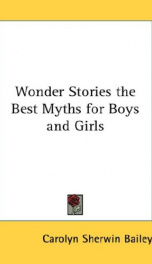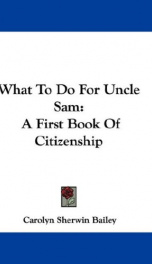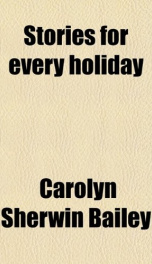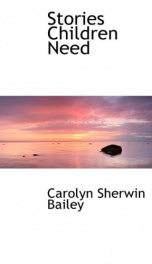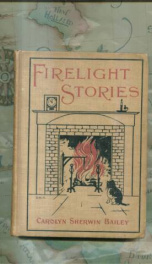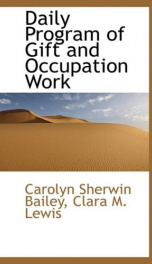Tell Me Another Story

From the PREFACE:The reward of the story-teller who has successfully met the child's story interest is the plea embodied in the title of this book: "Tell me another story." The book meets this child longing on a psychologic basis. It consists of groups of stories arranged so that their telling will result in definite mental growth for children, as well as satisfied story hunger.There has been a tendency in the past to group stories in a haphazard way; there has been no organized plan of selecting stories to precede and follow one another for the purpose of definite functioning of mind processes. The effect of one story of distinctly differentiated theme from one which has just been told is to break continuity of thought. On the other hand, stories of similar theme, but contrasting form told in the story-hour have a mental effect of concentration and will training. This mental growth through stories is the aim of the book.The instinctive and universal interests of all[iv] children form the themes of the story programs; and these interests are presented in their natural order for a year, beginning with home life, taking the child out into the world, and carrying him through his school, industrial, seasonable, and holiday activities. Three stories have been grouped in each program as the number upon which children can most easily fix their attention.The plan of grouping the stories in each program is very definite and psychologic. The first story in a group is an apperceptive one; it secures the child's spontaneous attention because, through its plot, it touches his own life in some way. It brings him into close and intimate touch with the interest theme of the program because it speaks of things that he knows, and other things that he can do. The second story in each group makes an appeal to the child's reasoning powers; having secured his attention through the apperceptive story, the story-teller now takes the child a-field, mentally, and secures his voluntary attention. It calls for constructive thought; it presents the theme of the program in a broader way, with wider application. It is, usually, the longest story of the program. The third story is, invariably, the dessert of this story meal. Through its brevity, humor, tenderness, or sharply contrasting treatment of the program theme, it[v] supplies the necessary relaxation, the fitting climax for the program.An analysis of the Trade Life program will illustrate the psychologic appeal upon which the book is built. The story, The Holiday, opens the program with its apperceptive appeal, showing the dependence of the home upon the industrial life of the community and the possibility of a child's cooperation in it. The second story in the trade program, Selma Lagerloof's Nils and the Bear, gives this wonderful Swedish writer's presentation of the iron industry as a factor in our growth from savagery to civilization. The third story, The Giant Energy and Fairy Skill, by Maud Lindsay, gives the program its climax in fantasy and contrast.A similar analysis may be made of each program in the book.It is not intended that the stories shall never be told to children separately; on the contrary, each story is one of the best examples to be found of the child interest which forms its theme. The book has been prepared, however, to meet in an educational way the need expressed in its title. It should be of value for the home, school, library, and settlement.--Carolyn Sherwin Bailey, New York, 1918. --This text refers to the Kindle Edition edition.
Info about the book
Author:
Series:
Unknown
ISBN:
0310920086
Rating:
4.5/5 (3)Your rating:
0/5
Languge:
English
Users who have this book
Users who want this book
What readers are saying
What do you think? Write your own comment on this book!
write a commentif you like Tell Me Another Story try:
Do you want to exchange books? It’s EASY!
Get registered and find other users who want to give their favourite books to good hands!
